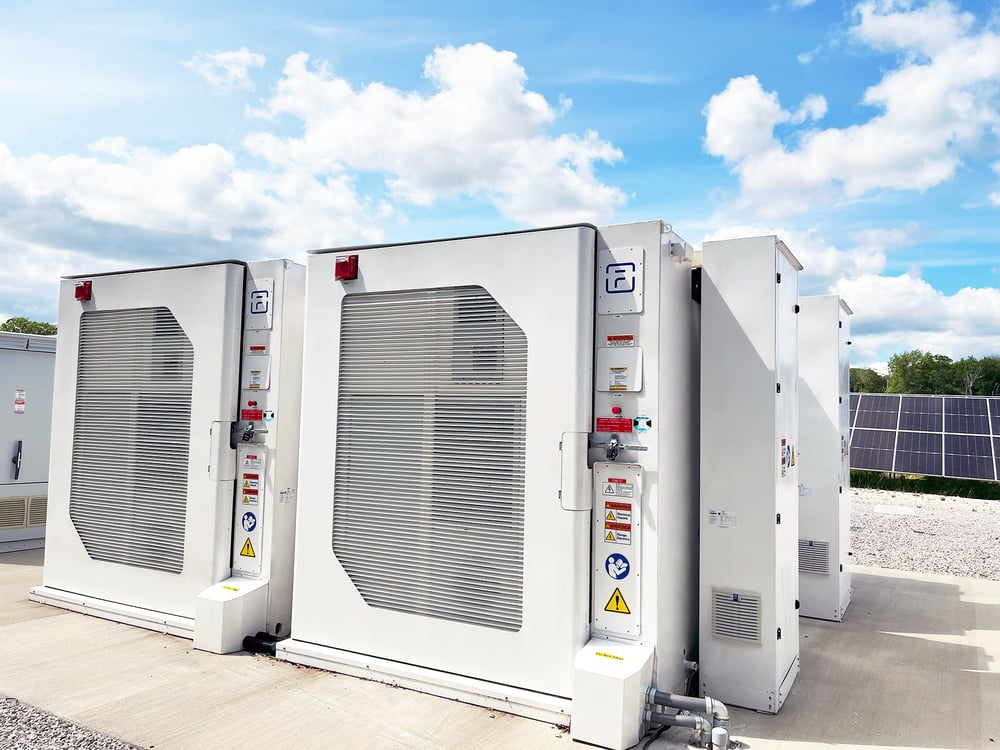Germany’s innovation tender is at a crossroads. While solar auctions are booming in Germany, their restrictive design has led to lower volumes of co-located solar and storage projects, limiting their economic benefit.
To secure the long-term success of the innovation tenders and create a cost-effective energy system for ratepayers, the developers of co-located energy storage projects need to see stronger business cases and ROIs. Allowing storage systems to charge electricity from the grid and earn additional revenue from wholesale market participation will improve project economics and has the potential to reduce the ever-increasing cost of renewable curtailment in Germany. Best-in-class storage technology and intelligent asset performance software can then enable asset owners to maximise their market-based returns.
Since 2020, Germany’s Federal Network Agency, Bundesnetzagentur (BNetzA), has been holding bi-annual capacity auctions targeting the construction of additional hybrid power generation, including solar parks and wind farms connected to battery-based energy storage systems. The agency has identified the need to combine fluctuating renewable energy production with storage technology to integrate green energy more efficiently and to improve electricity grid management. Through the innovation tenders, it plans to award contracts for up to 4 GWh to developers of distributed energy storage systems by 2028.
The role of innovation tenders in the German energy transitionThe current energy crisis brought the need for smart integration of renewables into renewed focus with the build-out of green generation booming in Germany. By the end of October 2023, Germany has witnessed the installation of nearly 12 GW of new PV capacity, already outpacing the annual target of 9 GW. Annual targets for 2024 and 2025 are even higher, reaching 13 GW and 20 GW respectively. |
The auction mechanism is inherently flawed, as it does not allow energy storage to also participate in all available energy and ancillary services markets. This makes the business case dependent on the feed-in premium rather than allowing owners to maximise revenues. This was exposed by auction rounds in December 2022 and May 2023 which awarded less than 100 MW of co-located assets from a potential 800 MW that was auctioned. However, as feed-in premiums increased, the most recent auction in September saw a greater interest, awarding the entire 400 MW volume. The increase of the maximum asset size from 20 MW to 100 MW may have also contributed to the renewed interest in the Innovation Tender. Larger installations with better economy of scale were able to participate and were awarded in both the May and September auctions of 2023.
Within the industry, the switch from a fixed feed-in premium to a floating market premium prior to the first failed tender round in December 2022 was hotly debated. Less important than the structure of the premium was the new absolute cap established by the regulator BNetzA. Both new structure and the cap were implemented at a time when inflationary pressures, largely resulting from the war in Ukraine, were starting to take their toll on the energy industry, with renewable energy developers facing unprecedentedly high costs of materials. As inflation levels triggered interest rate increases, capital costs for renewable projects also increased. Hence, the second main variable in project financing saw major changes that needed to be accounted for in the tender design.
Realising the need for intervention, BNetzA announced in March 2023 a 25% increase in the maximum feed-in-tariff for hybrid pv-powered battery systems to 9.18 ct/kWh. The auction in May 2023 yielded more bids but was still insufficient for more projects to go forward. Research carried out by The Centre for Solar Energy and Hydrogen Research Baden-Württemberg (ZSW) showed that average costs for a hybrid power generation plant to be taken into operation in 2025 were 10.40 ct/kWh, well above the adapted tariff.
The Need for Smart Tender Design Changes
The revenue opportunities for storage are there. Unfortunately, the current design of the innovation tender does not allow storage to access them.
The traditional solution would be to further increase the innovation tender premium cap to a price level that fully recognizes the increased system costs. This would result in higher payment guarantees for project developers and better project economics. On the downside, it would potentially increase pay-outs under feed-in regimes, increasing the cost for taxpayers. However, dependence on the regulator to define the right level of a feed-in premium should not be the modus operandi in a country that is building market-based stand-alone storage assets at an increasing pace.
Today, energy storage systems contracted under the innovation tenders can only store electricity generated by the co-located renewable generation assets and cannot charge from the main grid. BNetzA has put this rule in place to avoid blending green electricity with fossil-based power, limiting the greenwashing of grey electricity. This rule is also seen as a safeguard to exclude storage assets awarded under the innovation tenders to participate in the lucrative frequency regulation market (FCR), where it would compete as a subsidized asset against fully merchant assets.

Unfortunately, the policy in its current shape undermines the full potential of energy storage technology, its ability to integrate renewable energy into the power network, and provide much-needed flexibility. In consequence, solar + storage systems sit unused for a large part of the year, for example, at night and during low-production winter months. Instead, gas and coal-fired power plants are ramped up to fill electricity supply gaps. This needs to change if Germany still wants to reach its goal of sourcing 80% of gross power consumption from renewable energy sources by 2030 and reach net-zero in the electricity sector by 2035.
Efficient use of energy storage systems will also lower network costs as grid operators currently pay substantial curtailment fees to asset owners when the network is overloaded and cannot integrate more renewables. In 2022, 8 TWh of renewable power, mainly wind, was curtailed in Germany alone. This is an enormous loss of green electricity which could have been transmitted into storage systems. The cost of congestion of the German grid reached €4.25bn in the same year.
Allowing energy storage assets to optimise in wholesale markets will not only limit congestions and curtailments, but also increase the efficiency of wholesale markets, improve innovation tender project economics, and thereby reduce costs to taxpayers and electricity consumers alike. Fluence is actively engaging - jointly with industry stakeholders and associations - to drive those regulatory changes.
Maximising Returns for Co-located Assets
Optimisation of asset performance during its lifetime is the third major factor, apart from tender design and technology partners, that impacts project economics.
Projects with co-located renewables and storage assets have increased levels of complexity, requiring their owners and operators to carefully balance revenue maximization and cost control. The challenges asset management teams face are typically tied with the amounts of data handled. With many portfolios composed of several plants of varying technologies and OEMs, traditional methods of manual data collection become a constraint, compelling teams to look for modern asset performance management (APM) tools.
APM empowers owners of hybrid renewable and storage projects to unearth hidden latent performance issues, thereby minimising downtime, and enhancing operational efficiency and overall asset performance. As APM technologies evolve quickly, artificial intelligence (AI) plays a pivotal role not just to monitor performance but fully optimize it. Some of AI’s improvements on APM correlate to the capacity to swiftly analyse large amounts of data to unveil intricate patterns and anomalies that may be difficult or impossible for teams to capture by sifting through SCADA signals.
For instance, AI supports operators of storage assets by anticipating when cell temperatures may get higher than expected. The model predicts what the maximum cell temperature should be under the given operating conditions and issues warnings if the measured temperature exceeds that value by a certain, even minimal, threshold or exhibits a worrying trend. Similar goes for early prediction of potential malfunction of renewable generation assets.
Conclusion
Germany’s Innovation Tenders are important cornerstones of the country’s energy transition as they serve to incentivise efficient integration of the vast amounts of intermittent green electrons set to enter the German power market. Supporting the build-out of renewable energy in combination with energy storage will also enhance security of supply and introduce flexibility options to an increasingly decentralised energy system.
However, the tender’s regulatory framing needs to be better adapted to the current commercial circumstances. With inflationary pressures putting project business cases at risk, more far-reaching measures are needed to overhaul the innovation tender mechanism.
Smart tender design, allowing storage systems to charge electricity from the grid and earn additional revenue from wholesale market participation, will improve project economics and has the potential to reduce the ever-increasing cost of renewable curtailment in Germany. At the same time, it is down to project owners and developers to work with experienced and trusted technology providers to minimise risks and maximise returns.
Want to learn more about how energy storage can unlock
the full potential of the energy grid?



















